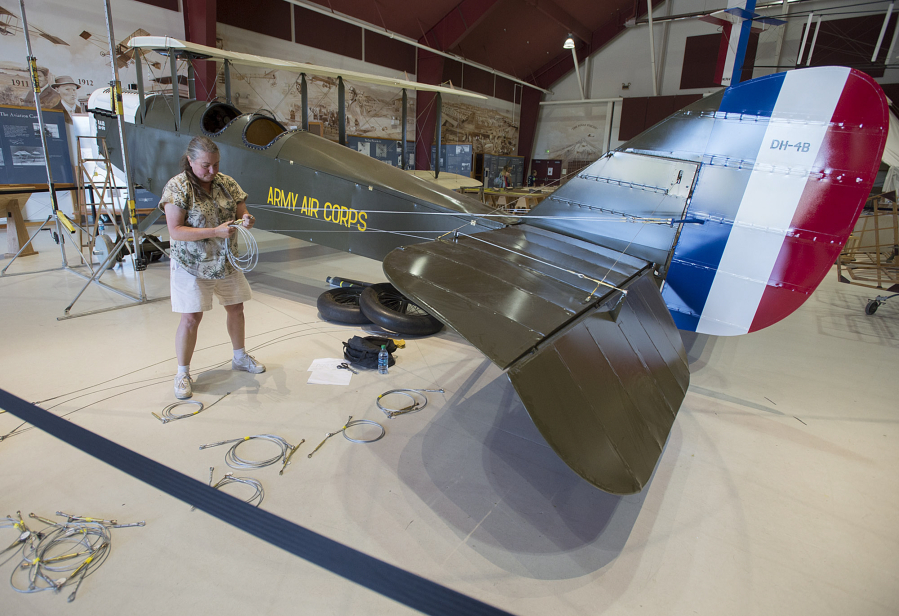As far as display poses go, you’d pretty much expect two options for Pearson Air Museum’s DH-4B Liberty. (Although you would be wrong.)
The obvious choices are in the air or on the ground, right? Turns out that it wasn’t much question that officials at Fort Vancouver National Historic Site would elect to keep the World War I-era biplane on the museum floor.
“For preservation purposes, it’s easier on the frame” of the aircraft, said Bob Cromwell, museum manager.
Grounding it also makes for better visibility.
“It’s a big airplane,” said Cromwell, acting chief ranger at Fort Vancouver National Historic Site. Visitors get a better idea of the scale when the plane is at eye level.
The DH-4B Liberty was unveiled Saturday when Fort Vancouver celebrated the 100th anniversary of the National Park Service. The plane was reconstructed by Century Aviation.
Karen Barrow and Mark Smith, owners of the East Wenatchee business, disassembled the biplane last week, trucked it to Vancouver, then reassembled it in the museum.
Inverted Jenny
And that’s where things could have taken an entirely different turn — literally. That other display option for a historic aircraft? In the air … and upside down.
They had to do that with an earlier restoration of a 1917 JN-4D “Jenny,” Barrow said.
A version of that aircraft is pictured on a rare U.S. postage stamp, by the way; the biplane was printed upside down, inspiring the nickname Inverted Jenny.
The Chicago Museum of Science and Industry’s inverted Jenny had been flown by a 1920s barnstormer. Officials at the Chicago museum wanted the plane displayed to illustrate that era.
They wanted it in the air, upside down, with a wing-walking mannequin standing on the under-surface of the top wing.
And no, you can’t simply assemble a JN-4D, then flip it over.
Before they could hoist the plane into position, Barrow said, “We had to reassemble it upside down.”
Off Beat lets members of The Columbian news team step back from our newspaper beats to write the story behind the story, fill in the story or just tell a story.




